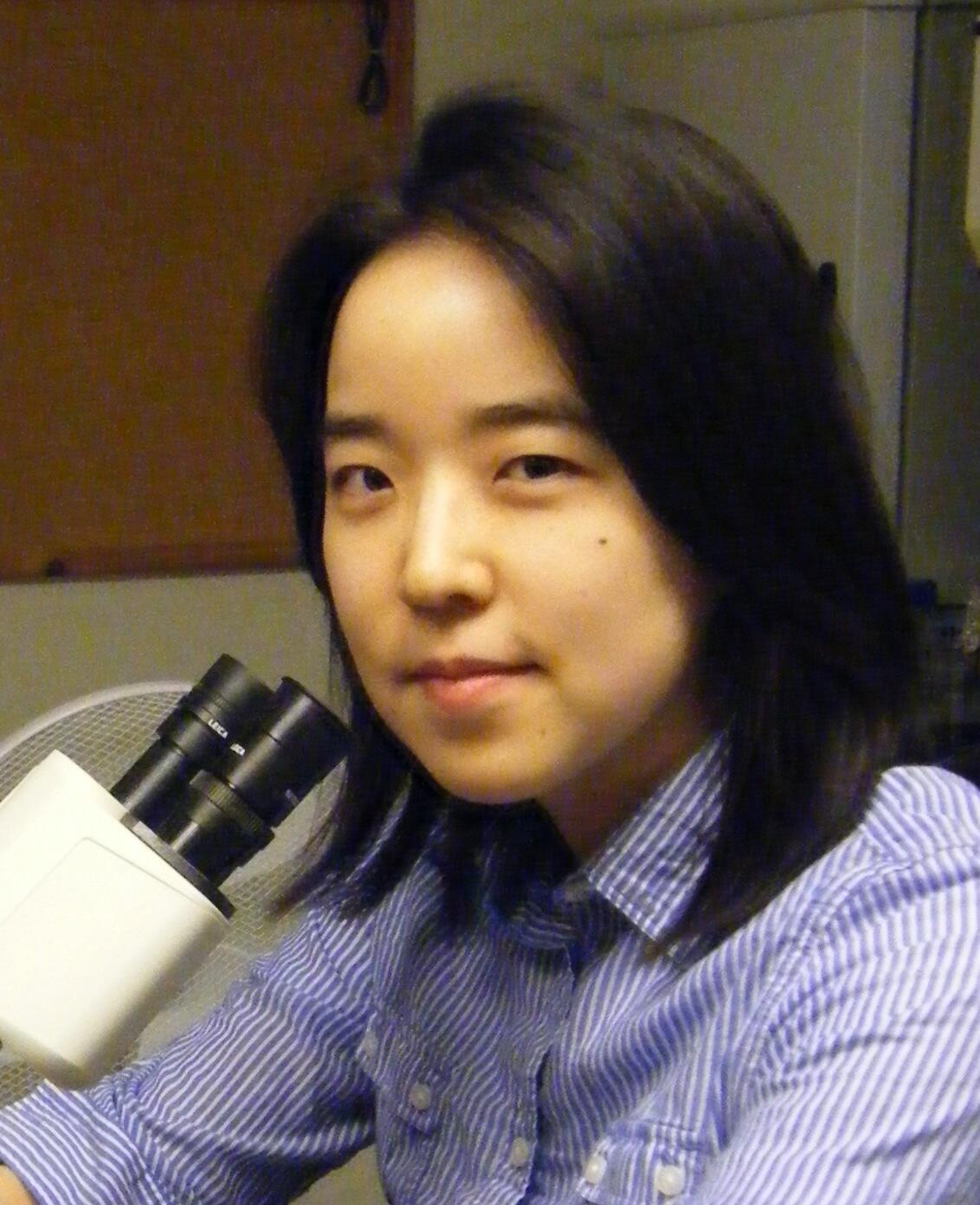Eunsoo Kim
Resesarch Associate
Adjunct Professor, Richard Gilder Graduate School

- Email:
- ekim1SPAMFILTER@amnh.org
Education
- University of Wisconsin-Madison , Ph.D., 2006
- Seoul National University , B.S., 2000
Research Interests
Dr. Kim’s research focuses on the evolution and ecology of single-celled eukaryotic flagellates. Her long-term research goals are the investigation of:
the diversity and genomics of those modern-day microbial eukaryotes that are keys to understanding the early evolution of eukaryotic life; symbiosis as a driver of evolutionary innovation; and the origin and evolution of plastids (chloroplasts).
Dr. Kim is particularly interested in understanding the environmental conditions and molecular processes that fostered the origin of the first photosynthetic eukaryotes by the process of endosymbiosis between free-living cyanobacteria and pre-green eukaryotic hosts. This evolutionary event, thought to have occurred during the early or mid- Proterozoic era, fundamentally changed the trajectory of life on Earth, but many questions about this cellular merging process remain. Inferring such an ancient event in the history of life requires a synthetic strategy that encompasses systematics, genomics, physiology, biochemistry, and biogeochemistry.
Current projects in the Kim lab are comparative genomics and morphology of several key flagellate taxa in order to infer traits of pre-green ancestors of land plants and green algae; culturing and sequencing of green algae that invade into amphibian cells; and microscopic and genomic characterization of bacterial endosymbionts living in photosynthetic flagellates. The Kim lab employs a broad range of experimental approaches including isolation and culture methods, fluorescence and electron microscopy, fluorescence in situ hybridization (FISH), environmental DNA sequencing, and next generation sequencing.
Publications
- Heger TJ, Edgcomb VP, Kim E, Lukes J, Leander BS, Yubuki N. A resurgence in field research is essential to better understand the diversity, ecology and evolution of microbial eukaryotes. Journal of Eukaryotic Microbiology (in press)
- Maruyama S, Kim E. 2013. A modern descendant of early green algal phagotrophs. Current Biology 23: 1081–1084.
- Fulneckova J, Sevcikova T, Fajkus J, Lukesova A, Lukes M, Vlcek C, Lang BF, Kim E, Elias M, Sykorova E. 2013. A broad phylogenetic survey unveils the diversity and evolution of telomeres in eukaryotesGenome Biology and Evolution 5: 468–483.
- Kim E, Archibald JM. 2013. Ultrastructure and molecular phylogeny of the cryptomonad Goniomonas avonlea sp. nov. Protist 164: 160–182.
- Curtis BA, Tanifuji G, Burki F, Gruber A, Irimia M, Maruyama S, Arias MC, Ball SG, Gile GH, Hirakawa Y, Hopkins JF, Kuo A, Rensing SA,Schmutz J, Symeonidi A, Elias M, Eveleigh RJ, Herman EK, Klute MJ,Nakayama T, Oborník M, Reyes-Prieto A, Armbrust EV, Aves SJ, Beiko RG, Coutinho P, Dacks JB, Durnford DG, Fast NM, Green BR, Grisdale CJ, Hempel F, Henrissat B, Höppner MP, Ishida K, Kim E, Kořený L,Kroth PG, Liu Y, Malik SB, Maier UG, McRose D, Mock T, Neilson JA,Onodera NT, Poole AM, Pritham EJ, Richards TA, Rocap G, Roy SW,Sarai C, Schaack S, Shirato S, Slamovits CH, Spencer DF, Suzuki S,Worden AZ, Zauner S, Barry K, Bell C, Bharti AK, Crow JA, Grimwood J, Kramer R, Lindquist E, Lucas S, Salamov A, McFadden GI, Lane CE,Keeling PJ, Gray MW, Grigoriev IV, Archibald JM. 2012. Algal genomes reveal evolutionary mosaicism and the fate of nucleomorphs. Nature 492: 59–65.
- Takishita K, Chikaraishi Y, Leger MM, Kim E, Yabuki A, Ohkouchi N, Roger AJ. 2012. Lateral transfer of tetrahymanol-synthesizing genes has allowed multiple diverse eukaryote lineages to independently adapt to environments without oxygen. Biology Direct 7: 5.
- Tanifuji G*, Kim E*, Onodera NT*, Gibeault R, Dlutek M, Cawthorn RJ, Fiala I, Lukeš J, Greenwood SJ, Archibald JM. 2011. Genomic characterization of Neoparamoeba pemaquidensis (Amoebozoa) and its kinetoplastid endosymbiont. Eukaryotic Cell 10: 1143–1146. (*co-first authors)
- Kerney R, Kim E, Hangarter R, Heiss A, Bishop C, Hall B. 2011. Intracellular invasion of green algae in a salamander host. Proceedings of the National Academy of Sciences USA 108: 6497–6502.
- Kim E*, Harrison JW*, Sudek S*, Jones MDM, Wilcox HM, Richards TA, Worden AZ, Archibald JM. 2011. Newly identified and diverse plastid-bearing branch on the eukaryotic tree of life. Proceedings of the National Academy of Sciences USA 108: 1496–1500. (*co-first authors)
- Graham LE, Kim E, Arancibia-Avila P, Graham JM, Wilcox LE. 2010. Evolutionary and ecophysiological significance of sugar utilization by the peatmoss Sphagnum compactum (Sphagnaceae) and the common charophycean associates Cylindrocystis brebissonii and Mougeotia sp. (Zygnemataceae). American Journal of Botany 97: 1–7.
- Kim E, Archibald JM. 2010. Plastid evolution: Gene transfer and the maintenance of ‘stolen’ organelles. BMC Biology 8: 73.
- Kim E, Park JS, Simpson AGB, Matsunaga S, Watanabe M, Murakami A, Sommerfeld K, Onodera NT, Archibald JM*. 2010. Complex array of endobionts in Petalomonas sphagnophila, a large heterotrophic euglenid protist from Sphagnum-dominated peatlands. The ISME Journal 4: 1108–1120.
- Kim E*, Yubuki N*, Leander BS, Graham LE. 2010. Ultrastructure and 18S rDNA phylogeny of Apoikia lindahlii comb. nov. (Chrysophyceae) and its epibiontic protists, Filos agilis gen. et sp. nov. (Bicosoecida) andNanos amicus gen. et sp. nov. (Bicosoecida). Protist 161: 177–196. (*co-first authors)
- Bae Y, Kim E, L’Hernault SW, Barr MM. 2009. The CIL-1 PI 5-phosphatase localizes TRP polycystins to cilia and activates sperm in C. elegans. Current Biology 19: 1599–1607.
- Kim E, Archibald JM. 2009. Diversity and evolution of plastids and their genomes. In: The Chloroplast: Interactions with the Environment.Sandelius AS and Aronsson H (eds) Springer-Verlag: Berlin, pp 1–39.
Teaching Experience
Faculty Appointments
Courses Taught
- Instructor
- Comparative Biology Seminar Series, Richard Gilder Graduate School at AMNH, Spring 2014
- Guest Lecturer
- Next Generation Sequencing, Richard Gilder Graduate School at AMNH, 04/2013
- Evolution, Richard Gilder Graduate School at AMNH, 04/2013
- Bio 221: Symbiosis, Gettysburg College, 02/2013
- Algae, University of Connecticut, 12/2013
Graduate Advisees
- Amber Paasch (08/2013-Present), RGGS Student
Graduate Committees